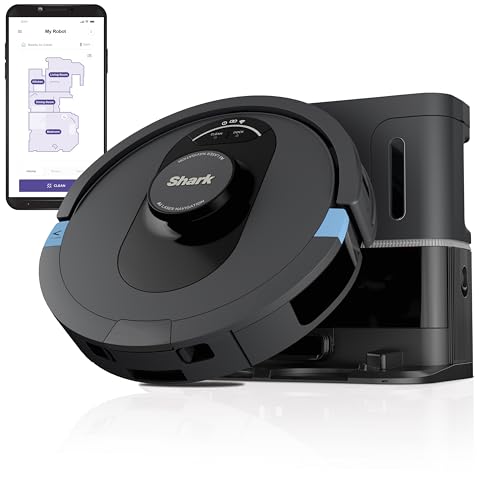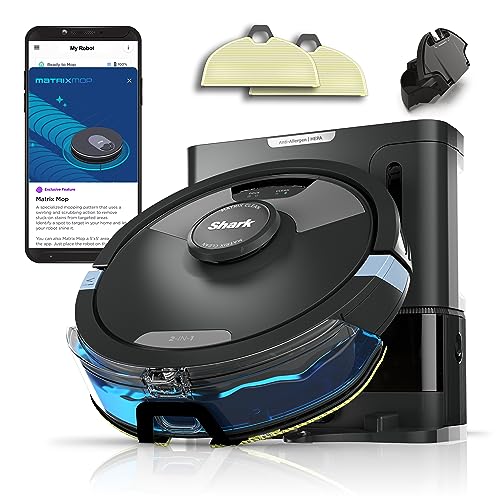 bagless autonomous vacuums – https://www.robotvacuummops.com –
bagless autonomous vacuums – https://www.robotvacuummops.com –
Robotic vacuums take care of lint, surface dirt, pet hair and more, keeping your floors cleaner so you can focus on the things that matter to you. They can also dock and charge automatically by remote control or on a schedule.
 The choice between bagged and non-bagged models will depend on your preferences and lifestyle as well as your budget. This guide will help you decide which one is the best fit for your home.
The choice between bagged and non-bagged models will depend on your preferences and lifestyle as well as your budget. This guide will help you decide which one is the best fit for your home.
Easy to empty
Bagless autonomous vacuums do not require any bags and are much more easy to empty than traditional vacuum cleaners. They also require less maintenance and tend to be quieter than traditional models, which typically come with an obnoxious filter. Some of them come with a dustbin that is easily removed to be disposed of which is extremely practical. Some robots are equipped with water tanks that can be used to clean floors and remove stubborn stains. These robots are more flexible since they can empty their tanks of water after each cleaning cycle, or if the tanks overflow.
Most robotic cleaners have large charging stations that can be placed on the floor of your home, so you can get other things done while it works. Some robot vacuums self-empty, which means they can empty their trash bins into a bin outside when they return to their docks to recharge. This is an enormous advantage over other robot vacuums which need to be manually emptied after every use.
Apart from getting rid of debris, bagless autonomous vacuums also aid in keeping your home healthy by sucking up dirt pet hair, lint, and other allergens on a regular basis. They can reach areas that are not accessible to traditional vacuum cleaners and fit under furniture in areas where dirt bunnies are.
Robot vacuums are an excellent addition to any home. They’re especially useful in cleaning floors that aren’t clean as they are able to remove the dust and crumbs that accumulate on hard surfaces. Most have an washable and removable filter that’s typically HEPA which is great for people with allergies or breathing problems.
However, if you have walls-to-wall carpeting or a home that’s filled with furniture, a robot vacuum might not be the best choice for your space. A conventional vacuum is a better option since it is more powerful and can deal with dirt that’s been laying around for longer. It’s also possible to use a robotic vacuum along with a regular one, so you can rely on the latter to deal with difficult messes while the first handles the daily stuff.
Cleansing is much easier
A bagless vacuum is more efficient than a bagged vacuum, as it doesn’t require you to clean up dust clumps from its dust bin. This is messy and could also release dust back into the air, which could cause allergy-related symptoms. A self-emptying model does not require the user to touch dirt as it will automatically empty itself into a bin. It only requires that the base be switched out every 60 days or so.
Bagless models also tend to be quieter than their bagged counterparts, meaning they are less disruptive to the family. Some models come with a hush feature which drastically reduces noise produced during the process of vacuuming. They can also be remotely controlled via an app or voice assistants such as Amazon Alexa or Google Assistant that allow users to plan cleaning sessions and alter settings while on the move.
Many robotic vacuums can be upgraded to add additional features such as HEPA filters and mopping capability. These can boost the performance of the vacuum and increase the number of surfaces it is capable of cleaning. Some of them can be used to make a voice and video calls, or as a surveillance camera.
When selecting a robotic vacuum, choose models with a large bin and a long battery life. The best models include a charging station that allows you to pause your vacuuming process, recharge and then return to where you started. You should consider a model that comes with an elastomer brush instead of bristle rollers to cut down on pet hair.
Choose a model that features an intelligent mapping feature to ensure thorough cleaning. The machine will map the area it has cleaned and will follow that route every time, unless there’s an obstacle. This will prevent the vacuum cleaner from wandering off and wasting time as can happen with cheaper models like our budget-friendly pick.
Easy to maintain
Bagless autonomous vacuums require less maintenance than bagged counterparts because the process to empty the debris bin is easy. You can remove the bin and empty it into a garbage can and then attach the bin to the unit. This will stop the cleaning process, allowing you to continue working without stopping. This will also reduce the amount of bags you need to buy in the future.
Another benefit of bagless vacuums is that it doesn’t stop working when the bin becomes overflowing like bags of vacuum do. This allows you to continue cleaning and achieve a better result without having the bin empty.
Furthermore, many robots that have a bagless base come with self-emptying features that allow them to return to their base and automatically dump their contents into the garbage. This is an important benefit for facilities managers who need to limit the amount of manual work their staff has to complete.
The top robotic vacuums for pet hair have advanced navigation and obstacle detection systems that allow them to maneuver around obstacles, such as children or pets that are small in size. Many models have lasers and cameras that map the space and use that information to determine the most efficient way to clean. This will allow you to achieve a thorough, consistent cleaning and ensure that you are in compliance with health and safety regulations in your facility.
Robotic vacuums aren’t a great solution for heavily soiled or cluttered areas, but they can be a great addition to your cleaning routine. You might still need to use a hand-held or canister vacuum in hard-to-reach places, and also for cleaning curtains, upholstery as well as drawers, closets, and kitchen cabinets. It is also recommended to remove any shag-piles of plush rugs as robot vacuums could become stuck in them.
Check your robot vacuum regularly to ensure that it isn’t clogged with dirt, dust or other particles. These can cause bad smells and impact the performance of the machine. You should also wipe the wheels of your robot vacuum to make sure they’re not soiled, clogged with hair or threads. Clean wheels will make your robot more efficient and prevent it from damaging your floors.
Repairing is much easier
Unlike bagged vacuums, bagless robotic vacuums don’t require any bags. Instead, they feature a large dust collection bin with an air-tight seal that’s easy to empty and replace. This allows the machine to operate more efficiently and also reduces the amount of dirt released into the air while vacuuming. Bagless robots also tend to have an extended lifespan than their bagged counterparts, because there is less wear and tear on the motor and nozzle.
Another advantage of bagless autonomous vacuums is that they are generally less expensive to run than bagged models. Bagged vacuums require replacement bags which can become costly over time. The majority of vacuums with bags have a washable filter which can last for years. This can save money over time and is more eco sustainable than purchasing new bags.
Robotic vacuums employ various sensors to clean, and map their surroundings. Models that are high-end, such as the Roborock S8 Pro Shark RV2502AE AI Ultra Robot Vacuum XL HEPA, make use of LiDAR and 3-D mapping technologies to provide superior navigation. These sensors enable the robot to navigate in complex environments, with no human assistance.
These systems are accurate but not 100% foolproof. They can mistake certain objects for steps or encounter obstacles they are unable to avoid. Some systems include the “teach feature” that allows the user program the robot so that it performs a specific route of cleaning after each use. This feature is beneficial for facility managers looking to verify that a specific area has been cleaned.
However, this technology is still an ongoing process. Many robo vacs continue to encounter issues with pet hair, which they often struggle to detect. If the robot can’t detect a dog droppings on the floor you may end up with “poo-pocalypse”. Certain systems can assist with this issue by combining LIDAR and 3D mapping technology with smart object recognition cameras. These cameras are an excellent addition to other navigational and mapping technology, as they aid robots in determining the best paths for cleaning.
